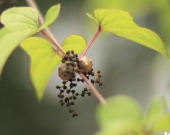

This is a stuffed Comox from a museum.


Pearl Sutton wrote:When, due to health stuff, the garden is not planted yet, some of the beds were not even cleared last fall, none were done the way I want beds done in the fall to be ready for spring, so everything needs work before I can even find the dirt under the weeds to amend and plant it.
BUT!!
The main weeds out there are brown eyed susan, ox eye daisy, buttercups, yarrow, lots of asters as tall as I am...
You know you are a permie when you say "I'm not coping, but at least the bees are happy!"




May Lotito wrote:4) self sufficiency. Last year a bad batch of potting mix destroyed many of my seedlings and potted plants so I decided to make my own as much as possible. I bought Coco coir and used home made compost. It still needs some optimization but all of my indoor plants repotted are rejuvenated and growing vigorously.

Douglas Alpenstock wrote:
May Lotito wrote:Happy to see mole tunnels showing up everywhere in the yard. That means the soil quality has been improving and the growing worm population attracts moles to aerate the soil. Good sign!
Although when the start chewing the bottoms off your root vegetables, you may find that your perspective changes from "welcome" to "dog food." Active rodents are not always friendly, and they breed exponentially. Just a heads-up.


Barbara Kochan wrote:I'm preparing to grow more perennial veggies. Just read scarlet runner beans are perennial in zones 7-11. Has anyone in the coastal pacific northwest had scarlet runners produce for more than one year? I think I'm in zone 7b/8 so I have some hope ...